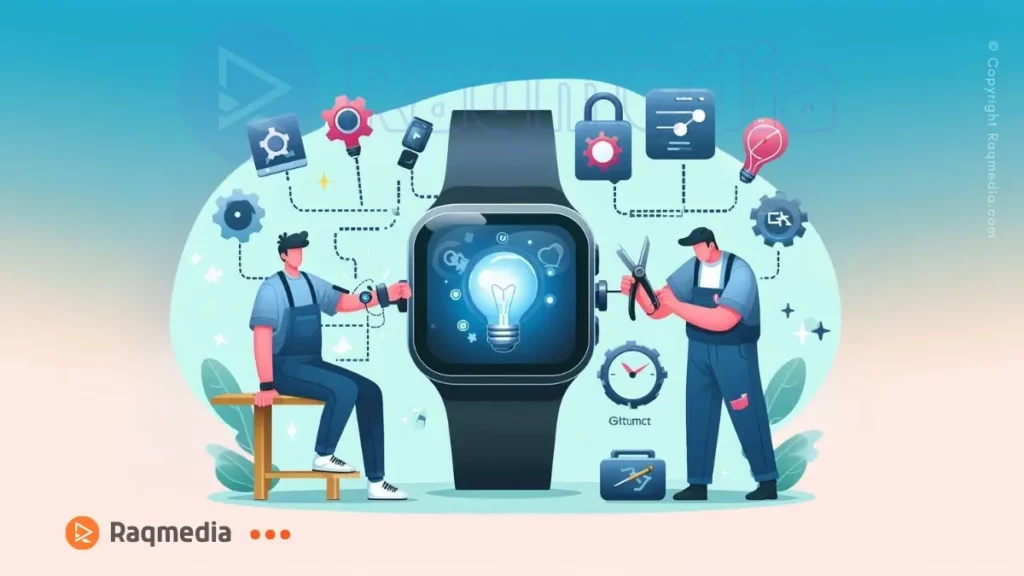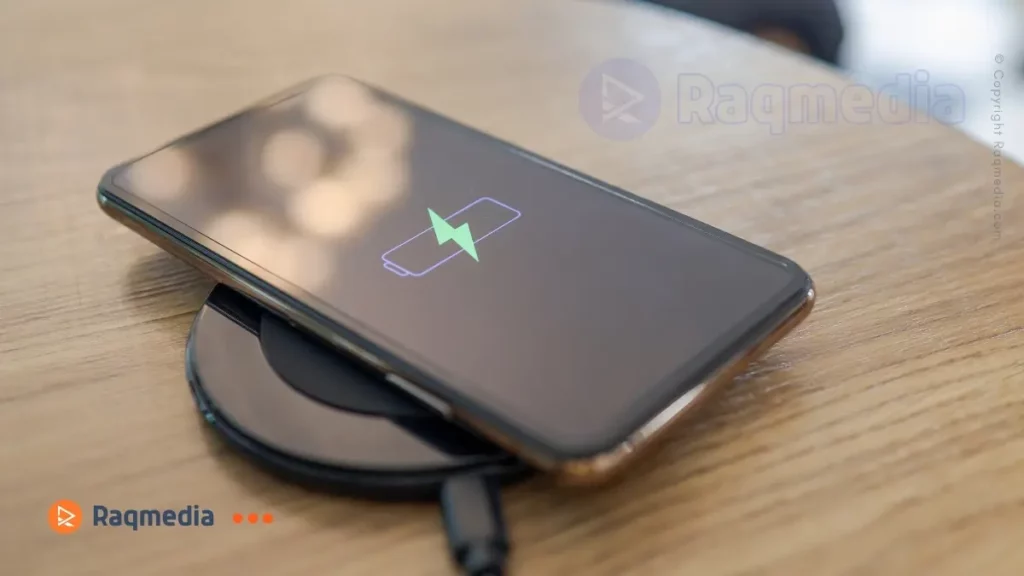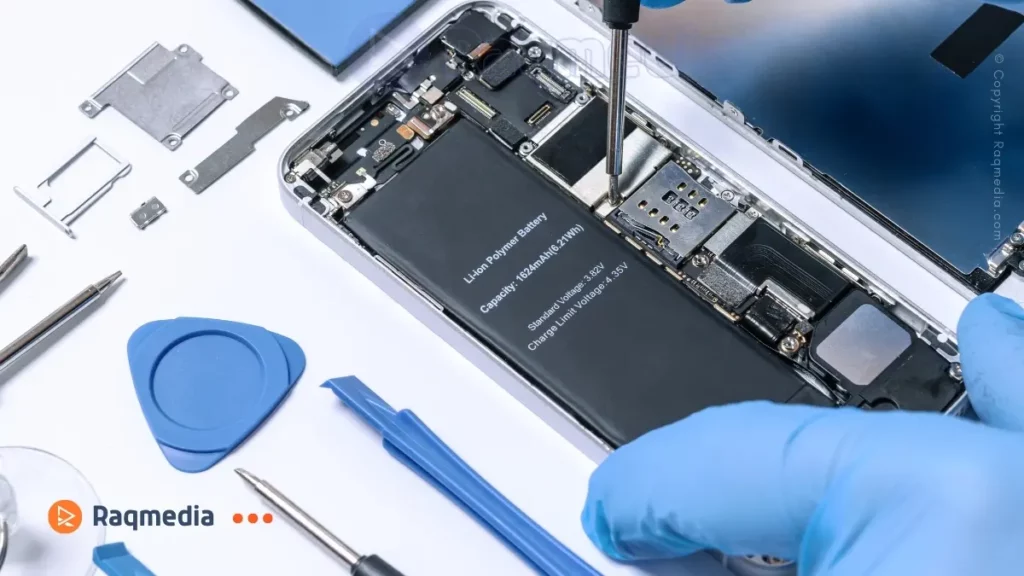In the world of smart wearables, where innovation meets everyday convenience, encountering technical hiccups can sometimes disrupt our seamless tech-savvy lifestyles. Fear not, for in this digital era, troubleshooting common issues with your smart wearable is not just a task for the tech gurus—it's an empowering journey that puts you in control of your device's performance.
Imagine being able to conquer connectivity glitches, tame battery drainage woes, or revive unresponsive touchscreens with confidence and ease. Welcome to a realm where troubleshooting becomes more than a fix; it becomes a skill that empowers you to navigate the intricate ecosystem of smart wearables independently.
Troubleshooting Made Easy: Fixing Common Issues with Smart Wearables
As we embark on this enlightening voyage together through the intricacies of smart wearable troubleshooting, we invite you to delve into a comprehensive overview of practical techniques aimed at unraveling those perplexing mysteries your device may present. Rooted in a customer-centric ethos, our mission is not only to equip you with the knowledge necessary to troubleshoot effectively but also to instill within you a sense of empowerment and mastery over the technological marvel adorning your wrist or clothing.

By exploring innovative solutions while maintaining unwavering reliability and professionalism, we aim to demystify the complexities surrounding common issues encountered by owners of smart wearables. So buckle up as we navigate through these digital meanders, empowering you to transform challenges into triumphs within the vibrant world of wearable technology.
Gadgets Connectivity Issues: Resolving Bluetooth Pairing Failures
When your smart wearable experiences connectivity issues like Bluetooth pairing failures, it can be frustrating and disrupt your device's functionality. To troubleshoot this common problem effectively, start by checking if your wearable is in close proximity to the paired device, as distance can interfere with the connection. Additionally, ensure that both devices have sufficient battery power to maintain a stable Bluetooth connection. If the issue persists, try restarting both devices or toggling Bluetooth off and on to initiate a fresh pairing process.
To resolve connectivity problems seamlessly, follow a step-by-step guide on resetting connections between your smart wearable and other devices. Begin by turning off Bluetooth on all connected devices, including your smartphone and smartwatch. Then, power cycle both devices by turning them off completely and back on after a few seconds. Once they restart, re-enable Bluetooth on each device and attempt to pair them again. This method often resolves minor connectivity glitches and establishes a reliable link between your smart wearable and companion gadgets.
Software updates play a crucial role in addressing connectivity issues effectively in smart wearables. Manufacturers frequently release firmware updates that contain bug fixes, security enhancements, and improved compatibility with external devices. By keeping your smart wearable's software up to date, you ensure that any underlying connectivity issues are promptly addressed. Check for available updates through the companion app or the manufacturer's website regularly to optimize performance and enhance seamless communication between your devices.
Battery Drainage: Maximizing Smart Wearable Performance
When handling battery drainage issues in smart wearables, it's essential to delve into the root causes behind this common concern. Factors such as excessive app usage, high screen brightness, continuous syncing of data, and outdated software can all contribute to rapid battery depletion. By understanding these triggers, users can proactively optimize their device settings to prolong battery life effectively.
To combat battery drainage in smart wearables, users can adopt practical strategies to maximize energy efficiency and enhance the device's longevity. These methods include adjusting display brightness to optimal levels, managing app background activity, disabling unnecessary notifications, and enabling power-saving modes when not in active use. By implementing these simple yet impactful practices, users can ensure their smart wearables operate at peak performance without compromising on battery life.

Recommendations for optimizing battery usage extend beyond just settings tweaks; cultivating energy-conscious habits also plays a crucial role in mitigating power consumption. Encouraging users to charge their devices fully before use, avoid overcharging, and refrain from keeping them plugged in unnecessarily can significantly contribute to preserving battery health over time. Educating users on developing sustainable charging routines and promoting energy-saving behaviors helps create a more eco-friendly and cost-effective approach to utilizing smart wearables.
Unresponsive Touchscreen: Restoring Functionality on Smart Wearables
An unresponsive touchscreen on your smart wearable can be frustrating, hindering your interaction with the device and affecting its overall usability. Recognizing the signs of an unresponsive screen is crucial in promptly addressing the issue. Common indications include delays in touch response, missed taps or swipes, or a complete lack of responsiveness. When faced with these symptoms, it's essential to initiate troubleshooting steps to revive touch functionality effectively.
To restore the touchscreen's responsiveness, start by ensuring the screen is free from any dirt, smudges, or debris that may impede touch sensitivity. Gently clean the screen using a microfiber cloth or screen-safe cleaning solution to remove any obstructions that could be causing the unresponsiveness. Additionally, adjusting sensitivity settings on your smart wearable can optimize touch recognition and improve user experience. By fine-tuning these settings based on your preferences and usage patterns, you can mitigate issues related to touch input accuracy.
For more advanced touchscreen calibration options, explore device-specific features designed to enhance responsiveness and accuracy. Many smart wearables offer calibration tools within their settings menus that allow users to customize touch sensitivity levels according to their needs. By calibrating the touchscreen properly, you can tailor the device's response to your touch inputs, ensuring a seamless and precise interaction experience. Implementing these calibration techniques can significantly enhance touchscreen performance and reduce instances of unresponsiveness.
By proactively addressing an unresponsive touchscreen through simple cleaning procedures, sensitivity adjustments, and advanced calibration options, you can optimize your smart wearable's touch functionality and enjoy a seamless user experience. Taking these troubleshooting steps empowers users to resolve common technical issues independently while maximizing the performance and longevity of their devices.
Activity Tracking Inaccuracies
Activity tracking inaccuracies can be frustrating for smart wearable users, especially when striving for precise fitness monitoring results. Common reasons behind such inaccuracies often stem from sensor misalignment, improper device positioning, or irregular maintenance practices. For example, wearing a smartwatch too loosely could affect sensor readings during physical activities like running or weightlifting. Similarly, failing to clean sensors regularly may lead to data discrepancies due to dirt accumulation hindering accurate measurements.
To address activity tracking inaccuracies effectively, recalibrating sensors is a crucial step. This process involves resetting the sensor parameters to ensure they function optimally and provide accurate data outputs. By following manufacturer guidelines on sensor calibration or utilizing built-in calibration features in wearable apps, users can enhance the precision of their activity tracking metrics. Additionally, paying attention to proper device placement – ensuring a snug fit and contact with the skin – can significantly improve the reliability of captured data points.
Proper maintenance practices are essential in improving tracking accuracy over time. Regularly cleaning sensors and ensuring the device remains free from debris or sweat buildup can prevent interference with data collection mechanisms. For instance, wiping down sensors after each workout session and storing the smart wearable in a dry environment can preserve sensor integrity and minimize inaccuracies in activity tracking. By emphasizing these maintenance routines alongside recalibration processes, users can optimize their wearable experience by achieving more precise activity monitoring outcomes.
Syncing Data Errors
Syncing data errors can be frustrating for smart wearable users, as accurate and timely information is key to maximizing the benefits of these devices. When faced with challenges related to data synchronization errors between your smart wearable and companion apps or devices, it's essential to follow systematic troubleshooting steps to address the issue promptly. Start by checking the connection settings on both your wearable and the paired device to ensure they are configured correctly. Often, a simple reconfiguration of Bluetooth settings or Wi-Fi connections can resolve syncing errors efficiently.
Stay proactive in ensuring your smart wearable's software is up to date. Manufacturers often release updates that address bugs, improve connectivity, and enhance features. By regularly checking for and installing these updates, you can prevent many potential technical glitches. For example, updating the firmware on your fitness tracker could resolve compatibility issues with new smartphones or improve battery efficiency.
Updating software versions is another crucial aspect of troubleshooting syncing problems. Manufacturers frequently release updates that not only enhance features but also address known bugs that might be causing synchronization issues. By keeping your smart wearable's firmware up to date, you can minimize the likelihood of encountering data syncing errors in the future. Moreover, utilizing cloud storage options can offer a seamless solution for backing up and recovering data from your smart wearable. Cloud services provide a secure and convenient way to store your activity logs, ensuring that even if syncing errors occur, your data remains safe and accessible.
For example, imagine you use a fitness tracker that syncs with a mobile app to monitor your daily exercise routines. If you notice discrepancies between the tracked activities on your wearable and what appears in the app, it could indicate a syncing error. By following troubleshooting guidelines such as verifying connectivity settings, updating software, and leveraging cloud backups, you can swiftly rectify this issue and maintain accurate workout records.
Syncing data errors should not impede your overall experience with smart wearables; instead, they should serve as opportunities to enhance your troubleshooting skills and optimize device performance for seamless data synchronization.
Smart Wearables Overheating Concerns
Smart wearables, like any electronic device, can be prone to overheating issues if not properly managed. Overheating triggers in these devices often stem from intense usage, exposure to direct sunlight for extended periods, or even software malfunctions that overwork the processor. Prolonged overheating can lead to various risks such as reduced battery life, compromised performance, and in extreme cases, hardware damage. For instance, wearing a smartwatch tightly on the wrist during high-intensity workouts where body heat is already elevated can exacerbate overheating problems.

To address overheating concerns effectively, users can implement simple cooling strategies to regulate the temperature of their smart wearables. One method involves removing excess moisture that may accumulate around the device and impede heat dissipation. Additionally, applying heat dissipation techniques like taking off the device for a few minutes or placing it in a cooler environment can prevent overheating episodes. By being proactive in managing temperature levels, users can maintain optimal device performance and longevity.
Promoting safe practices to prevent overheating incidents is crucial in maximizing the lifespan of smart wearables. Encouraging users to avoid exposing their devices to extreme temperatures or direct sunlight for prolonged periods can significantly reduce the risk of overheating. Furthermore, educating users on proper ventilation and airflow around the device while charging or using it intensively can aid in dissipating excess heat efficiently. By incorporating these preventive measures into daily habits, individuals can ensure a seamless user experience with their smart wearable devices while safeguarding against potential overheating issues.
Software Malfunctions in Smart Wearables
When it comes to smart wearables, software malfunctions can be a common headache for users, disrupting the seamless functionality of these devices. From frozen screens to unresponsive interfaces, these issues can hinder the overall user experience and limit the full potential of the wearable technology. One prevalent software glitch is system crashes, where the device unexpectedly shuts down or fails to respond to commands. Another common problem involves app crashes or errors, causing specific features or functionalities to become inaccessible. Dealing with these malfunctions promptly is crucial to maintaining the optimal performance of your smart wearable.
To address software malfunctions effectively, performing a factory reset or updating the firmware are recommended solutions that can often restore your device's normal operation. A factory reset clears out any corrupted data or settings that might be causing software instability, essentially giving your smart wearable a fresh start. Similarly, updating the firmware ensures that your device is equipped with the latest bug fixes and improvements released by the manufacturer. By staying proactive about software updates and maintenance routines, you can mitigate the risk of encountering frequent software malfunctions down the line.
Regular maintenance routines play a pivotal role in preventing future software glitches and maintaining the overall stability of your smart wearable. Just like any other electronic device, smart wearables require periodic check-ups and optimizations to keep them running smoothly. Removing unnecessary apps, clearing cache regularly, and monitoring system performance are simple yet effective ways to prevent software malfunctions before they escalate. By incorporating these practices into your routine, you can enhance the longevity and reliability of your smart wearable while minimizing disruptions caused by software issues.
Keep your smart wearable clean and well-maintained to avoid hardware issues. Regularly wipe down the device with a soft cloth to prevent dust accumulation that may affect sensors or touch responsiveness. Additionally, ensure that straps are securely attached and not worn out to maintain a snug fit during activities. By practicing good maintenance habits, like cleaning the charging ports regularly, you can extend the lifespan of your device.
In conclusion, being aware of common software malfunctions in smart wearables empowers users to take control of troubleshooting efforts proactively. By understanding the types of glitches that may occur and knowing how to address them through factory resets, firmware updates, and regular maintenance tasks, users can ensure their devices operate optimally for an extended period. Implementing preventive measures and staying informed about software best practices contribute significantly to enhancing user experiences with smart wearables.
Strap Issues: Resolving Comfort and Functionality Challenges
When it comes to smart wearables, the strap plays a crucial role not only in securing the device on your wrist but also in providing comfort during extended wear. To troubleshoot common strap-related issues that may arise, start by assessing the root cause of discomfort or functionality problems. If you notice the strap feeling loose, inspect the fastening mechanism for any damage or wear that may be affecting its grip. Oftentimes, a simple readjustment or tightening of the strap can solve this issue without needing professional help.
For users facing broken or damaged straps on their smart wearables, there are several DIY fixes that can extend the life of the device. Depending on the severity of the damage, simple solutions like using adhesive tapes for temporary repairs or replacing specific sections of the strap with aftermarket parts can be cost-effective alternatives to full replacements. By empowering users with these troubleshooting techniques, they can maintain their smart wearables in optimal condition without significant expenses.

Moreover, if standard strap options do not meet user preferences regarding style or material, suggesting alternative customization solutions can enhance user satisfaction. From silicone bands designed for athletic activities to leather straps perfect for formal occasions, guiding users toward compatible and personalized choices can elevate both comfort and aesthetics. By offering a range of options and encouraging users to explore customization possibilities based on their individual tastes, smart wearable owners can enjoy a tailored experience that aligns with their lifestyle seamlessly.
In conclusion, addressing strap issues through proactive troubleshooting not only improves the user's daily comfort and convenience but also prolongs the lifespan of smart wearables. By promoting DIY fixes and guiding users toward suitable replacement or customization options, individuals can take control of maintaining their devices effectively. This emphasis on hands-on problem-solving empowers users to overcome challenges independently while enhancing their overall experience with smart wearables.
Enhancing User Experience Through Seamless Troubleshooting
In the dynamic world of smart wearables, troubleshooting common issues can significantly enhance user experience and prolong the functionality of these innovative devices. By addressing concerns proactively, users can maintain peak performance and maximize the utility of their wearables. Whether tackling connectivity glitches, battery drainage woes, or unresponsive touchscreens, the ability to troubleshoot effectively empowers users to stay connected and engaged with their devices. Embracing a DIY approach to problem-solving not only saves time but also cultivates a sense of ownership and tech-savviness among consumers.
By mastering troubleshooting techniques, users can turn challenges into opportunities for growth and learning. For instance, resolving activity tracking inaccuracies through recalibration can lead to more precise fitness monitoring results, motivating individuals to achieve their health goals with confidence. Similarly, conquering syncing data errors fosters seamless integration between smart wearables and companion apps, enabling users to track progress effortlessly and make informed decisions about their well-being. Each successful troubleshooting endeavor contributes to a smoother user experience and strengthens the bond between individuals and their wearable devices.
Furthermore, by actively engaging in troubleshooting practices such as managing software malfunctions or maintaining strap integrity, users demonstrate a commitment to long-term device satisfaction. Taking charge of these aspects not only ensures smoother operation but also extends the lifespan of smart wearables, offering enduring value for tech enthusiasts. Embracing troubleshooting as a cornerstone of user interaction with smart wearables heralds a future where innovation meets reliability seamlessly. With these skills at hand, users navigate the digital landscape confidently while reaping the benefits of cutting-edge technology tailored to enhance everyday experiences.
Protect your activity tracking data by backing it up periodically either on the cloud or through companion apps. In case of syncing errors or software malfunctions leading to data loss, having backups ensures you don't lose valuable information like fitness progress or health metrics. For instance, syncing your sleep records daily to a cloud storage service can provide an extra layer of security against unexpected data mishaps.
Enhancing Your Smart Wearable Experience Through Seamless Troubleshooting
In a world where technology plays a significant role in our daily lives, troubleshooting common issues with smart wearables becomes essential to maximize the benefits of these innovative devices. As we've explored various solutions for connectivity issues, battery drainage concerns, unresponsive touchscreens, activity tracking inaccuracies, and more, it's evident that empowering users with troubleshooting knowledge fosters independence and confidence in handling technical challenges.
By demystifying complex problems and providing practical steps to address them effectively, we aim to equip tech-savvy consumers, wearable device owners, and fitness enthusiasts with the tools they need to optimize their smart wearable experience. A proactive approach to maintenance and problem-solving not only enhances device performance but also extends the longevity of these cutting-edge gadgets. Remember, staying informed and actively engaging in troubleshooting tasks can lead to a seamless and rewarding interaction with your smart wearables.
FAQs:
1. How often should I update my smart wearable's software?
Regularly updating your smart wearable's software is crucial to address bugs, enhance features, improve security measures, and ensure optimal device performance. Check for updates at least once a month or whenever new versions are released by the manufacturer.
2. What should I do if my smart wearable keeps disconnecting from Bluetooth?
If you're experiencing frequent Bluetooth disconnection issues with your smart wearable, try resetting the connection by turning off Bluetooth on both devices, then re-pairing them. Additionally, ensure that both devices are fully charged and within close range during pairing.
3. Can I replace my smart wearable's battery myself?
Most smart wearables have sealed batteries designed for optimal performance and safety. It is recommended to consult the manufacturer or an authorized service center for battery replacements to avoid damaging your device or voiding warranty coverage.
4. How can I calibrate the sensors on my fitness tracker for accurate results?
To calibrate sensors on your fitness tracker for precise activity tracking data, follow the manufacturer's instructions for sensor calibration settings or utilize calibration features available in companion apps. Ensure proper positioning of the device during calibration exercises.
5. Is it safe to wear my smart wearable in extreme weather conditions?
While most modern smart wearables are designed to withstand varying environmental conditions, it is advisable to avoid exposing them to extreme temperatures or excessive moisture. Take precautions such as removing excess sweat or moisture buildup regularly and utilizing protective cases when necessary.










Struggling with smart wearable problems? Learn the tricks to fixing common issues quickly and effectively. Get your device back on track!
Troubleshooting made simple: Fix common issues with smart wearables in no time. Expert advice and solutions at your fingertips.